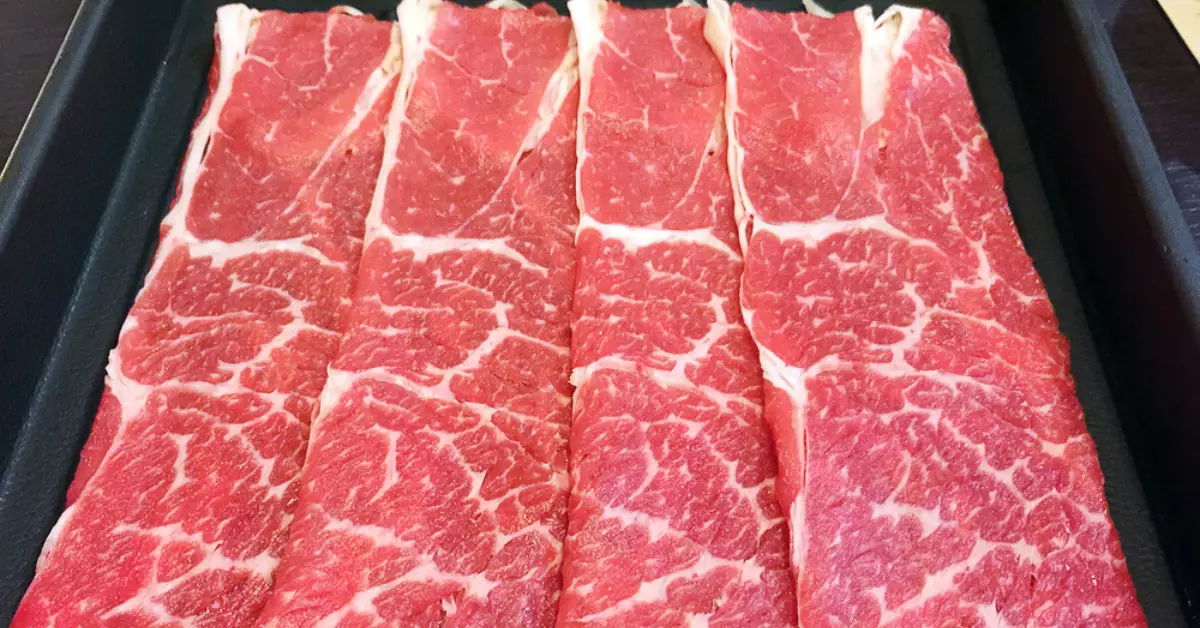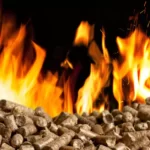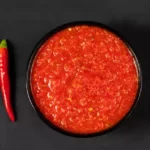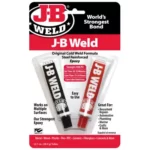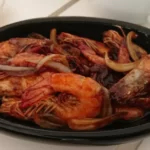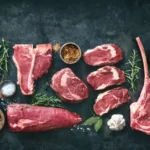Brisket, a delicious and versatile cut of meat, often purchased and stored frozen, requires careful thawing to maintain its quality and flavor. When it comes to prepping your frozen brisket for the cooking process, the way you thaw it can make a significant difference.
Thawing frozen brisket properly ensures a juicy, tender result once cooked. It helps maintain the texture of the meat and reduces the risk of foodborne illnesses which can emerge when meat is not handled appropriately.
Diving into the world of frozen brisket thawing, it’s evident that it’s not just about shifting the meat from freezer to oven. The thawing process involves crucial steps, each deserving attention for a scrumptious outcome.
Why Proper Thawing Matters
Importance of Thawing Frozen Brisket Correctly
The significance of thawing your brisket correctly cannot be overstated. It’s the first step in ensuring your meat cooks evenly and retains its taste. Incorrectly thawed meat often results in a tough, dry, and less flavorful dish. Proper thawing, on the other hand, guarantees a moist, tender brisket that’s full of flavor.
Risks Associated with Incorrect Thawing
There are potential health risks associated with incorrect thawing too. Rapid or uneven thawing can lead to the growth of harmful bacteria, making the meat unsafe to eat. Additionally, it could result in a “freeze-thaw” cycle if the meat thaws and re-freezes, reducing the quality and potentially increasing the risk of foodborne illnesses.
The Science of Thawing Meat
Basic Principles of Thawing Frozen Meat
Thawing meat is not simply about transforming it from a frozen state to a thawed one. It’s about doing so slowly and evenly, which allows the meat to retain its quality, texture, and taste. This slow transformation helps ensure the meat remains at a safe temperature during the process, reducing the risk of bacterial growth.
Why Brisket Behaves Differently
Brisket is a particularly large and dense cut of meat, which means it requires more time to thaw than smaller or less dense cuts. Additionally, due to its rich marbling and fat content, brisket can retain cold temperatures longer, thus requiring a careful and patient thawing process.
Preparing for the Thaw
In the culinary world, patience and preparation go hand in hand. This couldn’t be truer when dealing with frozen brisket. Before embarking on the thawing process, setting up the correct environment and having the right tools can make all the difference.
Suitable Environment for Thawing Brisket
When it comes to thawing, the best environment is one that provides a consistent, safe temperature. This helps prevent the brisket from entering the ‘danger zone’ (between 40°F and 140°F), a temperature range where bacteria can multiply rapidly, leading to potential foodborne illnesses.
Refrigerator Thawing
The refrigerator provides a controlled environment that maintains a temperature well below the danger zone. This setting not only ensures the safety of the meat but also prevents the loss of moisture, allowing the brisket to retain its juices and flavor.
Cold Water Thawing
For this method, a large sink or a clean basin is ideal. The brisket will be placed in a leak-proof bag and submerged in cold water. This environment facilitates faster thawing than the refrigerator, but it requires more attention to maintain safety and effectiveness.
Necessary Tools and Equipment
Having the right tools at hand can ease the process significantly. Here are some essential tools:
Pan or Tray
For refrigerator thawing, a shallow pan or tray is essential. It serves two primary purposes – it contains any liquid that may drip from the meat during thawing, and it prevents the brisket from contaminating other foods in the refrigerator.
Leak-proof Plastic Bag
This is crucial for the cold water thawing method. A large, sturdy, leak-proof plastic bag prevents water from touching the brisket directly and also prevents the brisket’s juices from leaking into the water.
Food Thermometer
A food thermometer is a handy tool, especially for those new to thawing brisket. It can be used to monitor the temperature of the brisket throughout the thawing process, ensuring that it stays within the safe temperature range.
Paper Towels
Useful for cleaning up any spills and for patting the brisket dry before cooking, paper towels are always good to have on hand.
Clean Cutting Board
A large, clean cutting board is needed for inspecting and preparing the thawed brisket for cooking.
Refrigerator Thawing: A Safe Approach
Arguably the safest method of thawing, refrigerator thawing is ideal for maintaining the quality and safety of the brisket. Though it requires more time, the wait is worthwhile for a juicy, tender result.
Steps to Thaw Brisket in the Refrigerator
Here are the detailed steps to thaw your brisket in the refrigerator:
- Select a Pan or Tray: Choose a shallow pan or tray large enough to hold the brisket. The pan will catch any juices that may drip from the brisket as it thaws, preventing cross-contamination in your refrigerator.
- Place the Brisket on the Pan: Remove the brisket from the freezer and place it on the pan. Ensure the fat side of the brisket is up, as this helps retain the meat’s moisture.
- Move the Pan to the Refrigerator: Put the pan with the brisket in the refrigerator, ideally on the bottom shelf to avoid any potential contamination of foods below.
- Wait for the Brisket to Thaw: Allow the brisket to thaw slowly over several days. Avoid rushing the process, as rapid thawing can result in a dry, tough brisket.
Time Management for Refrigerator Thawing
Managing time is crucial in the refrigerator thawing method. For every five pounds of meat, allocate approximately 24 hours of thawing time in the refrigerator. This might seem a long time, but this method minimizes the risk of bacterial growth and ensures even thawing.
Common Mistakes and How to Avoid Them
While refrigerator thawing is a relatively straightforward process, there are common pitfalls to avoid:
- Insufficient Thawing Time: Not giving brisket enough time to thaw could result in unevenly thawed meat. This can lead to an unevenly cooked brisket, with some parts potentially remaining raw.
- Improper Placement in Refrigerator: Not using a pan or tray, or placing the brisket on a higher shelf in the refrigerator could lead to cross-contamination from meat drips.
- Incorrect Temperature Setting: The refrigerator should be at or below 40°F (4°C) to keep the meat safe.
Cold Water Thawing: A Quicker Method
The Process of Thawing Brisket in Cold Water
If you need to thaw your brisket more quickly, the cold water method is a safe and faster alternative. Here are the steps:
- Place the brisket in a leak-proof plastic bag.
- Submerge the bag in cold water.
- Change the water every 30 minutes until the brisket is thawed.
Precautions for Cold Water Thawing
Never use warm or hot water for this method, as it could raise the temperature of the meat to an unsafe level and promote bacterial growth. Also, ensure that the bag is fully submerged and the water is changed regularly.
Troubleshooting Tips
If the water isn’t cold, add a few ice cubes to lower the temperature. Make sure the meat is fully submerged and that the water is changed regularly to keep the temperature constant.
Post-Thawing Steps
Examining Thawed Brisket for Readiness
After thawing, examine the brisket to ensure it’s ready for cooking. It should be flexible but still slightly icy to the touch. Use a food thermometer to confirm it’s below 40°F (4°C).
Sanitary Practices Post Thawing
Clean the area where you thawed the brisket to prevent cross-contamination. Wash your hands thoroughly before and after handling the brisket.
Immediate Cooking vs. Storing Thawed Brisket
If you plan to cook the brisket immediately after thawing, go right ahead. If not, you can safely store it in the refrigerator for up to 2 days before it must be cooked.
Alternatives to Traditional Thawing
Thawing Brisket in the Microwave
If you’re short on time, you can thaw your brisket in the microwave. Use the defrost setting and rotate the meat regularly for even thawing. Cook immediately after thawing as parts of the brisket may become warm during this process.
Cooking Frozen Brisket without Thawing
It’s also possible to cook brisket directly from the freezer, though it will take approximately 50% longer. Monitor the meat closely with a food thermometer to ensure it reaches the proper internal temperature.
Common Questions about Thawing Brisket
Can I Refreeze Thawed Brisket?
Yes, you can, but only if the brisket was thawed in the refrigerator. Do not refreeze brisket that was thawed using the cold water or microwave method.
How Long Does Thawed Brisket Last in the Fridge?
Once thawed, brisket can safely be stored in the refrigerator for up to 2 days before it needs to be cooked.
Does Thawing Method Affect the Taste of Brisket?
Yes, the method of thawing can impact the taste and texture of your cooked brisket. Slow, even thawing, like in the refrigerator, is more likely to result in a tender, juicy brisket.
Conclusion
The journey of a brisket from the freezer to the dinner table is a testament to careful handling and patient preparation. The method of thawing chosen can significantly impact the end result, making the difference between a dry, tough brisket and a juicy, tender one.
The science behind thawing meat, particularly brisket, is a fascinating blend of culinary art and food safety. The process may be time-consuming, but it’s crucial for a flavorsome brisket.

